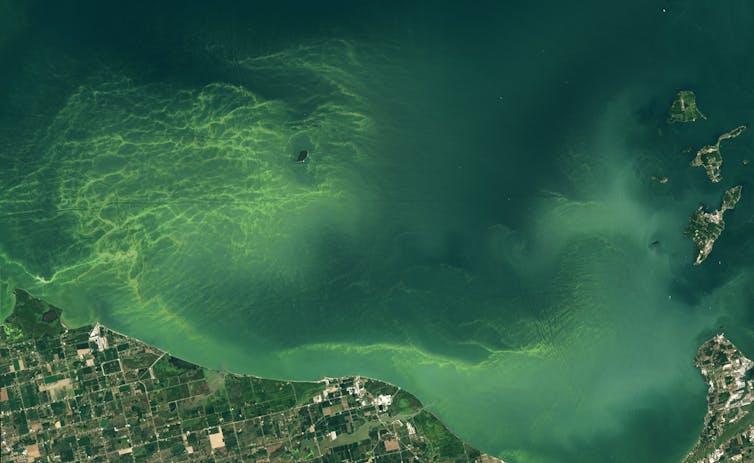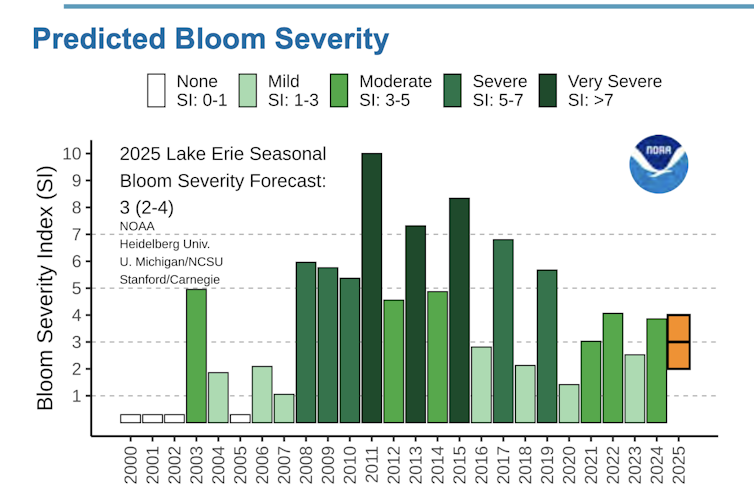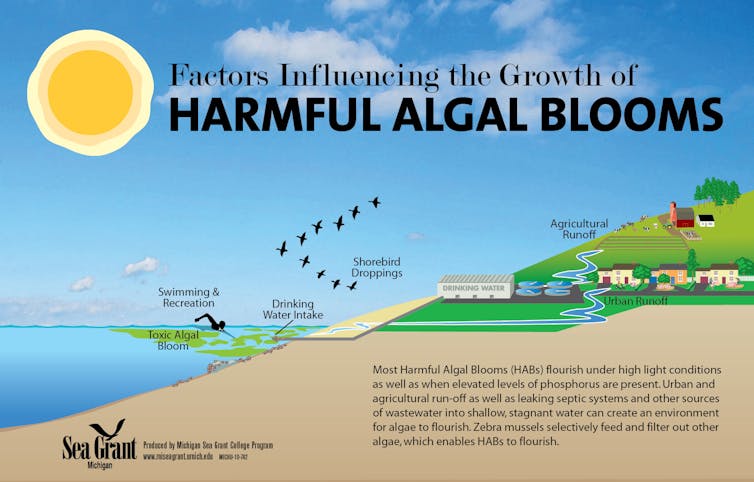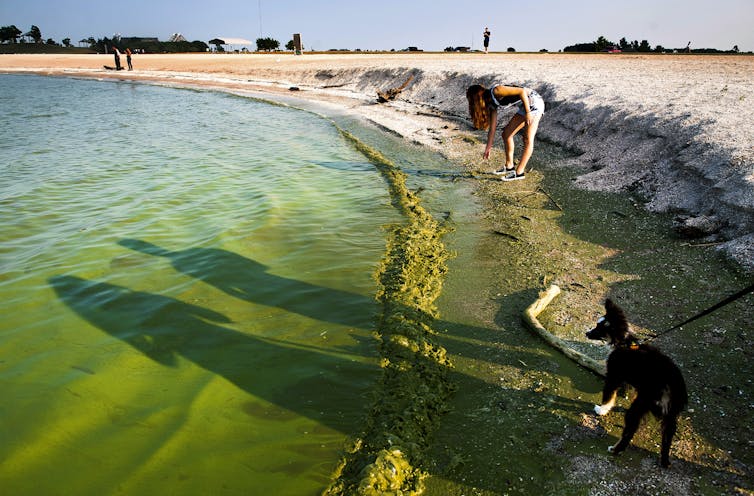Lucas A. Berenbrok, University of Pittsburgh; Michael Murphy, The Ohio State University, and Sophia Herbert, University of Pittsburgh
Neighborhood pharmacies are rapidly shuttering.
Not long ago, Walgreens, one of the nation’s biggest pharmacy chains, announced plans to close 1,200 stores over the next three years. That’s part of a larger trend that has seen nearly 7,000 pharmacy locations close since 2019, with more expected in the coming years.
Many community pharmacies are struggling to stay open due to an overburdened workforce, shrinking reimbursement rates for prescription drugs and limited opportunities to bill insurers for services beyond dispensing medications.
As trained pharmacists who advocate for and take care of patients in community settings, we’ve witnessed this decline firsthand. The loss of local pharmacies threatens individual and community access to medications, pharmacist expertise and essential public health resources.
The changing role of pharmacies
Community pharmacies – which include independently owned, corporate-chain and other retail pharmacies in neighborhood settings – have changed a lot over the past decades. What once were simple medication pickup points have evolved into hubs for health and wellness. Beyond dispensing prescriptions, pharmacists today provide vaccinations, testing and treatment for infectious diseases, access to hormonal birth control and other clinical services they’re empowered to provide by federal and state laws.
Given their importance, then, why have so many community pharmacies been closing?
There are many reasons, but the most important is reduced reimbursement for prescription drugs. Most community pharmacies operate under a business model centered on dispensing medications that relies on insurer reimbursements and cash payments from patients. Minor revenue comes from front-end sales of over-the-counter products and other items.
However, pharmacy benefit managers – companies that manage prescription drug benefits for insurers and employers – have aggressively cut reimbursement rates in an effort to lower drug costs in recent years. As a result, pharmacists often have to dispense prescription drugs at very low margins or even at a loss. In some cases, pharmacists are forced to transfer prescriptions to other pharmacies willing to absorb the financial hit. Other times, pharmacists choose not to stock these drugs at all.
And it’s not just mom-and-pop operations feeling the pinch. Over the past four years, the three largest pharmacy chains have announced plans to close hundreds of stores nationwide. CVS kicked off the trend in 2021 by announcing plans to close 900 pharmacy locations. In late 2023, Rite Aid said that thousands of its stores would be at risk for closure due to bankruptcy. And late in 2024, Walgreens announced its plans to close 1,200 stores over the next three years.
To make matters worse, pharmacists, like many other health care providers, have been facing burnout due to high stress and the lasting effects of the COVID-19 pandemic. At the same time, pharmacy school enrollment has declined, worsening the workforce shortage just as an impending shortfall of primary care physicians looms.
Why pharmacy accessibility matters
The increasing closure of community pharmacies has far-reaching consequences for millions of Americans. That’s because neighborhood pharmacies are one of the most accessible health care locations in the country, with an estimated 90% of Americans living within 5 miles of one.
However, research shows that “pharmacy deserts” are more common in marginalized communities, where people need accessible health care the most. For example, people who live in pharmacy deserts are also more likely to have a disability that makes it hard or impossible to walk. Many of these areas are also classified as medically underserved areas or health professional shortage areas. As pharmacy closures accelerate, America’s health disparities could get even worse.
So if your neighborhood pharmacy closes, what should you do?
While convenience and location matter, you might want to consider other factors that can help you meet your health care needs. For example, some pharmacies have staff who speak your native language, independent pharmacy business owners may be active in your community, and many locations offer over-the-counter products like hormonal contraception, the overdose-reversal drug naloxone and hearing aids.
You may also consider locations – especially corporate-owned pharmacies – that also offer urgent care or primary care services. In addition, most pharmacies offer vaccinations, and some offer test-and-treat services for infectious diseases, diabetes education and help with quitting smoking.
What to ask if your pharmacy closes
If your preferred pharmacy closes and you need to find another one, keep the following questions in mind:
• What will happen to your old prescriptions? When a pharmacy closes, another pharmacy may buy its prescriptions. Ask your pharmacist if your prescriptions will be automatically transferred to a nearby pharmacy, and when this will occur.
• What’s the staffing situation like at other pharmacies? This is an important factor in choosing a new pharmacy. What are the wait times? Can the team accommodate special situations like emergency refills or early refills before vacations? Does the pharmacist have a relationship with your primary care physician and your other prescribers?
• Which pharmacies accept your insurance? A simple call to your insurer can help you understand where your prescriptions are covered at the lowest cost. And if you take a medication that’s not covered by insurance, or if you’re uninsured, you should ask if the pharmacy can help you by offering member pricing or manufacturer coupons and discounts.
• What are your accessibility needs? Pharmacies often offer services to make your care more accessible and convenient. These may include medication packaging services, drive-thru windows and home delivery. And if you’re considering switching to a mail-order pharmacy, you should ask if it has a pharmacist to answer questions by phone or during telehealth visits.
Remember that it’s best to have all your prescriptions filled at the same pharmacy chain or location so that your pharmacist can perform a safety check with your complete medication list. Drug interactions can be dangerous.
Community pharmacies have been staples of neighborhoods for more than a century. Unfortunately, current trends in pharmacy closures pose real threats to public health. We hope lawmakers address the underlying systemic issues so more Americans don’t lose access to their medications, health services and pharmacists.
Lucas A. Berenbrok, Associate Professor of Pharmacy and Therapeutics, University of Pittsburgh; Michael Murphy, Assistant Professor of Pharmacy Practice and Science, The Ohio State University, and Sophia Herbert, Assistant Professor of Pharmacy, University of Pittsburgh
This article is republished from The Conversation under a Creative Commons license. Read the original article.




















































